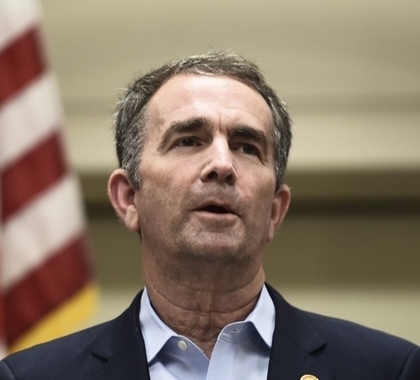With coronavirus rampaging throughout Virginia, effectively closing the commonwealth’s economy and pushing 306,000 people out of work in three weeks, Gov. Ralph Northam has picked a terrible time to sign into law a group of regressive “clean energy” policies that will harm the roughly 870,000 Virginians who live in poverty by increasing their energy costs.
The first of these policies, the Virginia Clean Economy Act, establishes a renewable energy mandate forcing state utilities to produce 14 percent of their electricity generated from “renewable” sources in 2021, gradually increasing the mandate to 100 percent by 2050.
Renewable energy mandates (REM) force expensive, heavily subsidized, and politically favored electricity sources such as wind and solar on ratepayers and taxpayers. These mandates disproportionally impact low-income households by raising their electric bills as well as the cost of all goods and services.
A 2019 working paper from the Energy Policy Institute at the University of Chicago showed REMs are dramatically increasing retail electricity prices and are a very expensive way to try to reduce carbon dioxide emissions. According to the study, seven years after REMs are enacted, renewables’ share of electricity generation increases by only 1.8 percent. The authors also found REMs raise retail electricity prices by 11 percent. After 12 years and just a 4.2 percent increase in renewables’ share of generation, these prices rise by 17 percent. Altogether, the total extra electricity costs of REMs to consumers in the states that have enacted REM are $125.2 billion.
The study also reveals reducing carbon dioxide emissions through REM costs $130 – $460 per ton of carbon dioxide abated. These increased costs are, at the low end, almost three times higher than the social cost of carbon estimated by the Interagency Working Group set up by the Obama administration, which is roughly $46 per ton for 2020.
Unsurprisingly, in states with REMs, energy rates are rising twice as fast as the national average and states with renewable mandates had electricity prices 29 percent higher than those without. The 29 states with renewable energy mandates (plus the District of Columbia) had average retail electricity prices of 12.39 cents per kilowatt hour (cents/kWh), according to the U.S. Energy Information Administration (EIA). On the other hand, the 21 states without renewable mandates had average retail electricity prices of just 9.54 cents/kWh. (Virginia, mandate free until now, has average retail prices of 9.48 cents/kWh.)
The second policy, the Clean Energy and Community Flood Preparedness Act, brings Virginia into the Regional Greenhouse Gas Initiative (RGGI), which is an interstate cap-and-trade program established in 2009 and made up of the New England states, along with New York, New Jersey, Delaware, and Maryland. Cap-and-trade programs are systems that limit carbon-dioxide emissions by establishing a specific amount of carbon dioxide businesses or other organizations may produce and allowing additional capacity to be bought from other organizations that have not used their full production allowance. If an entity emits above the cap without purchasing additional allowances, it will suffer a financial penalty.
Advocates of cap-and-trade point to the RGGI states and California, which has its own program, as examples of how these programs can be successfully implemented. In reality, cap-and-trade is akin to a regressive tax because it disproportionally burdens low-income households, who have less of a cushion to absorb the higher energy and gasoline costs these programs are specifically designed to produce.
A Manhattan Institute study estimates California’s program raised residential electricity costs by as much as $540 million in 2013 alone, while California’s Legislative Analyst’s Office (LAO) estimates cap-and-trade will increase gasoline prices by 15–63 cents per gallon by 2021, and by 24–73 cents per gallon by 2031. LAO also projects Californians will spend $2 billion to $8 billion extra on gasoline by 2021, and estimates the increased gasoline prices will cost $150–$550 per household by 2026.
Retail electricity prices in the Golden State are also 58 percent higher than the national average, an 18 percentage point increase above where they were before cap-and-trade was enacted in 2012. EIA data shows retail electricity prices in the 10 RGGI states and California are currently 45 percent higher than the U.S. average.
Representatives of the State Corporation Commission (SCC) testified in the House of Delegates that RGGI could cost Dominion Energy Virginia ratepayers $3.3 to $5.9 billion over the first decade, increasing average electricity bills $84 to $144 per year. The Department of Environmental Quality estimates participation in RGGI would cost Virginians $65 million in 2020.
Enacting this renewable energy mandate and joining RGGI is going to make everything more expensive for working families in Virginia while substantially raising costs for businesses. The average Virginia resident at or below the poverty line already spends around a quarter of their take-home pay on energy costs. Moreover, many small businesses are already in desperate financial positions because they have been ordered to close due to COVID-19.
If there ever was a time not to enact policies that would add to these costs, it would be in the midst of an economy-killing global pandemic. Nobody knows how long the economic recovery will take, but it will surely take longer now that Northam has signed these impractical policies into law.






